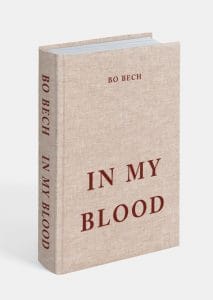
Bo Bech
What’s your secret to being personal?
I think the most important mindset here is to have passion. That’s why people love chefs, but also fear them—we are so direct, like “life and death”. I had Paustian for 8 years, and then I realized that everything was too white and clean. I started seeing that every gesture I made sort of pushed away the human feel away. The way I look at a restaurant is that it’s either feminine or masculine. The masculine mindset is, I’d go there because of a specific thing they think this place is unique for. The feminine mindset is, “Let’s go there because it’s so cozy”. In my view, it’s never been possible to visit a restaurant that accommodates both mindsets. So I thought, why not make that attempt, so I can find out if there really is a reason behind having these two mindsets, or if it was even possible.

Bo Bech’s Nordic Italian mash-up, Lou Lou
Is that how Geist was born?
The attempt was to create a cozy restaurant for the guys. I try to do the best type of food as you would at a gourmet restaurant, but never tell your guests. I thought, “What if you remove all the things you don’t pay for, but get anyway?” I understand that sometimes you get a little tired of food always having to have a thought.

Bo Bech’s signature langoustine with yuzu and hibiscus
What drives your food? Is it art, music, or emotion?
I look at it as telling a story, basically. My food is very seasonal driven. I think some people understand it, some don’t—it’s not a religion, you don’t need to understand it. Is it funny to eat strawberries in the winter? Is it funny to devour in a heavy chocolate cake in 45°C weather? It’s overpowering. So you should present with where you are and how the food is. The more you love something, the closer you are to understanding the definition of it. It’s something you can only tell after you’ve done it a thousand times. I think Geist probably defined “space” more accurately. The intention is to make everything look industrial. In 2001, I lived in New Delhi, and I remember going somewhere with my architect friends, and I said, “Oh, so they’re still fixing the place,” and they said, “No, that’s the décor.” They were making new look old. The whole restaurant scene … it’s become fashionable to be unpretentious. It’s become fashionable to be sloppy, but there’s a fine line.

In My Blood
What do the five pillars in your new book, In My Blood, mean to you personally?
In My Blood was written and created the same way I would do a menu. It started out with a feeling of something that eventually led to a dish. I realised when I think about food, I have different pillars. For example, “rage” is when I taste a product that I don’t understand. I used to have a love hate relationship with endives because it was so bitter. It was an ongoing battle that took years to perfect. Then there’s this pillar called “journey”, a humbling phase where you travel to a place, where you meet new people and discover new ideas, your heart is open, and in a way you’re searching, but not really, you’re soaking up the good energy. “Tribute” is when you celebrate beauty. I like to take a product and say, “I’m going to celebrate language through this. I’ll put it on a pedestal.” Then, I say, “I want something like a supporting actor for this dish.” I want a provocation, but nothing that doesn’t have a significant reference. For example, I’ll dust hibiscus on it. There’s bitterness in the hibiscus, and I like this chromatic view of playing with shady red colors. It’s an homage to the Little Sun project by one of my favorite artists, Olafur Eliasson.

You wrote, “The truth is easier to remember than the lie,” in your last book What Does Memory Taste Like?. How does food tell the truth for you?
You know when visit someone in their apartment? You’re in their sanctuary, and you see who they really are. You observe their taste, and their likes and dislikes. With certain people, you don’t even have to try to tell the truth, you’re just being you. Some people tend to look at my food, and say things like “minimalistic”, “simple”, etc. The reality is, it’s boiled down to the essence of what I actually want to tell. It’s ripped apart from all the bullshit, of the insecurities. A lot of dishes created today are very safe. It’s always a little bit crisp, a little soft, a little caramelized … I think it becomes boring to continue using the same picture to tell the same story. But if you change that game constantly, you’re choosing to only have one focus, being very clear in your expression. That’s exactly what I try to do with my food.



